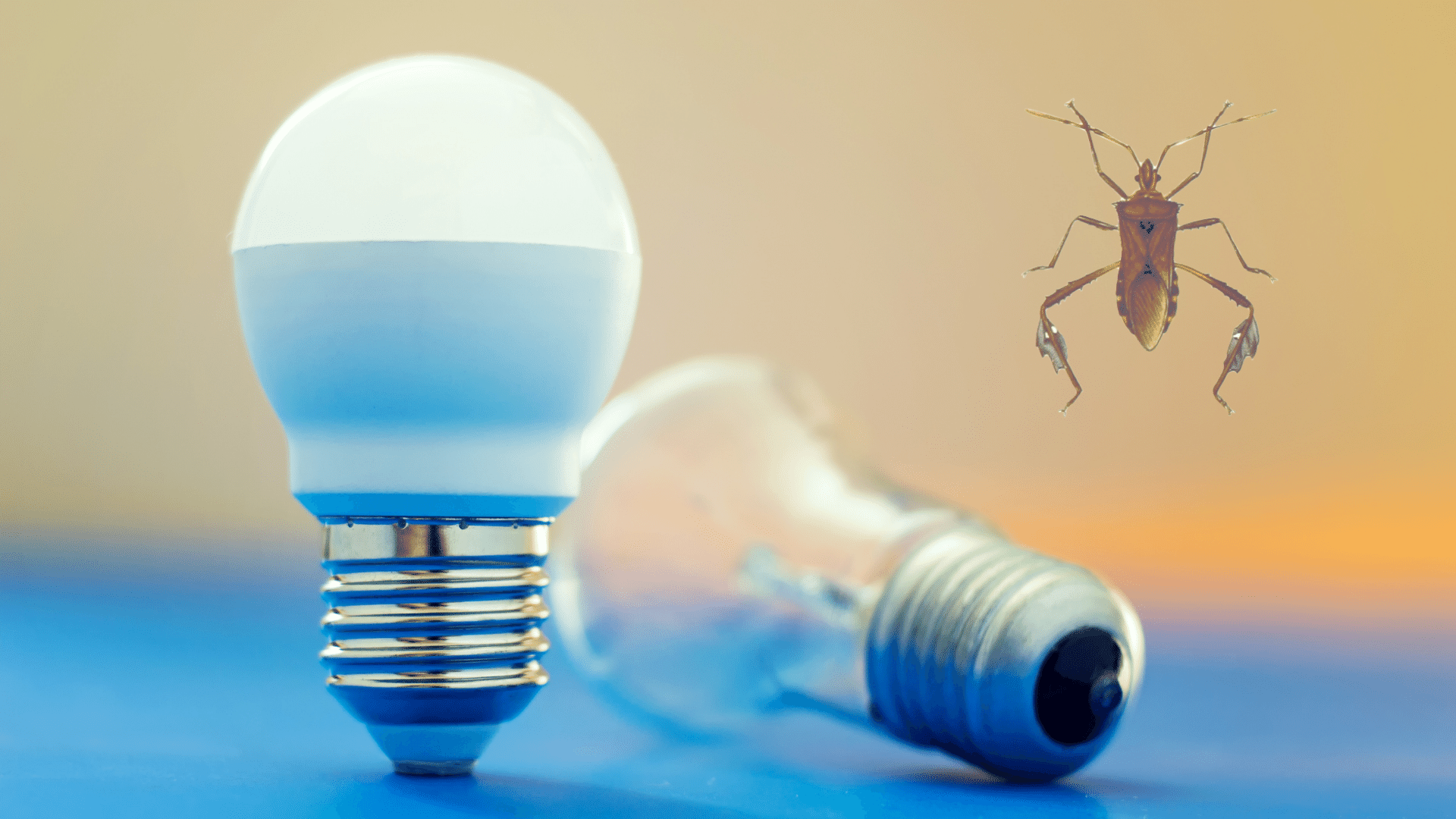Many people are choosing to switch to LED lights inside and outside their homes. LEDs are more energy-efficient than traditional bulbs and can last much longer, making them a cost-effective option in the long run.
However, some wonder if LED lights attract more bugs than other types of light. While there is no definitive way to get rid of all bugs, there are a few things to consider.
Firstly, sadly for us, no matter what light source you choose to use, you will always be inviting some bugs into your home. All insects are attracted to light, regardless of the type of light. Some insects will home in on specific wavelengths than others.
Secondly, bugs and creepy crawlies will still be moving around even in the absence of light. Inevitably some will cross your path – the difference is that without the light, you generally wouldn’t know about it until you receive a bite.
But let’s take a deeper look and uncover whether switching to LED lights can reduce the number of bugs attracted to your home.
Light wavelengths and colour temperature

All light sources emit, unsurprisingly, light. The wavelength of this light includes the short wavelengths of X-rays and ultraviolet, then the colour spectrum visible to humans, ranging from purple through to red, and then the longer frequency lengths of infrared and radio waves.
Now, in a light source that emits the human-visible spectrum, we see white light. This white light varies depending on how it is made up. If the light is filled with reds, oranges or yellows, you get a warmer light with a colour temperature in the 2000 Kelvin (K) to 3500K range. If there is a lot of blue light, the colour temperature is 5100K and above and is described as cool white. The space between is referred to as natural or daylight white.
Why do bugs like light?
Insects can see the UV spectrum better than the Infrared end, which means they are generally attracted to lights with short wavelengths that emit UV, blue, and green light.
In addition, bugs, especially ones that like to bite, such as mosquitos and midges, are also attracted to the heat that our bodies emit, but they can be easily confused by the light bulb’s heat, which helps to draw them in.
Do LED lights attract bugs?
If you’ve been hoping for some relief from bugs in the evening, it’s partially good news. LED lights are significantly less appealing to insects than incandescent and halogen bulbs. This is because LED light bulbs emit fewer short-frequency wavelengths than those types of bulbs, instead giving off more long-frequency waves.
Of course, you can change this intensity by your choice of colour settings, assuming you’ve got a bulb that goes from cool to warm white or you have an RGB bulb. If you opt for a warm colour, such as orange or red, the light becomes invisible to most of the bugs flying around.
Additionally, LED bulbs are very low power and therefore generate very little heat, which helps minimise the bug invasion further.
Sadly though, LED light does not repel the bugs; they are just significantly less attractive – so you’ll still get random insect visitors from time to time.
If you’re wondering, “Do LED strip lights attract bugs?” the good news is that they act in precisely the same way, so program them to change to a warmer colour in the evening to reduce the number of intruders that head through your window.
Are there any LED bug lights to prevent bugs?
As discussed above, moving your LED lights into warmer colours will significantly reduce the impact of insects on your life, but it is also possible to purchase warm-only bulbs, that is, bulbs that only emit light in the red, yellow and orange parts of the spectrum.
These “amber” or “LED bug lights” lights are designed to minimise the attractiveness of your home to bugs. However, as with regular LEDs, they won’t entirely remove bugs from your life – but it should make for a more pleasant experience when trying to relax in the evening. Additionally, warm light is soft, cosy and romantic – so pleasant to be under when relaxing in the garden or living room.
Conclusion
So, does LED light attract bugs? To a far lesser degree than other kinds of light, yes. All light will attract insects to some degree. You can try changing the colour of your lights to warmer tones in the evening or purchase some “amber” or “LED bug lights.” These will work to reduce the number of bugs in your home without making your living space feel like a photography darkroom.
FAQs
LEDs are colder than incandescent and halogen lights, so they naturally appeal less to insects. Additionally, if you move them towards warmer colours in the evening, the light is virtually invisible to most insects; therefore, you’ll receive fewer unwanted visitors.
All visible light attracts some insects, but red will attract the least, followed by orange and then red.
Are spiders attracted to LED lights? No. Will you find spiders at your LED light strip? Absolutely. The reason for this is simple. Spiders like well-lit areas because the light should attract insects they can capture and eat.
No. LED light does not repel insects. However, they are much less appealing; therefore, you won’t be swarmed by insects when using LED light. If you have RGB lights, slide them over to the warm end of the spectrum (yellow, orange, red) to minimise their appeal in the evening.
Short wavelength light attracts insects, in order words, light on the blue/violet and green end of the spectrum. You can reduce the attractiveness of your home to bugs by using LED bulbs that emit light in the spectrum’s red, yellow and orange parts.
Leave a Reply